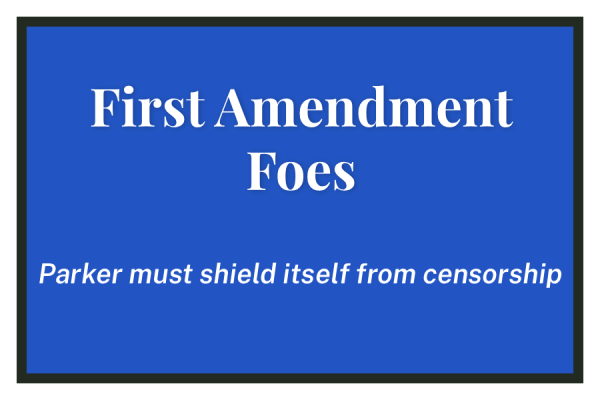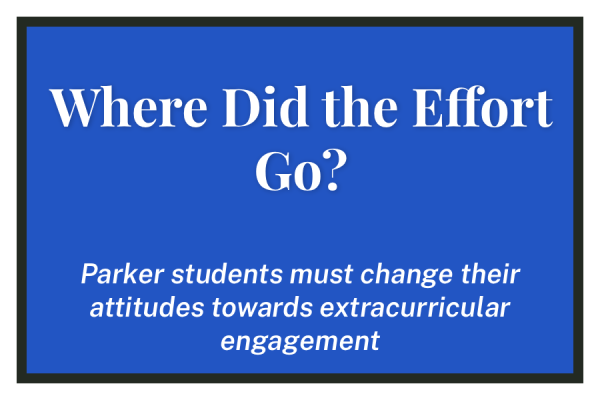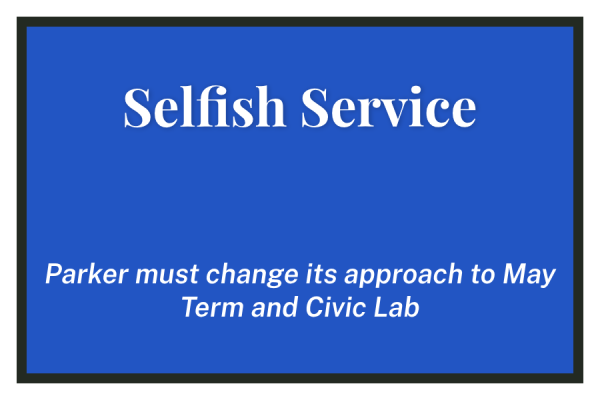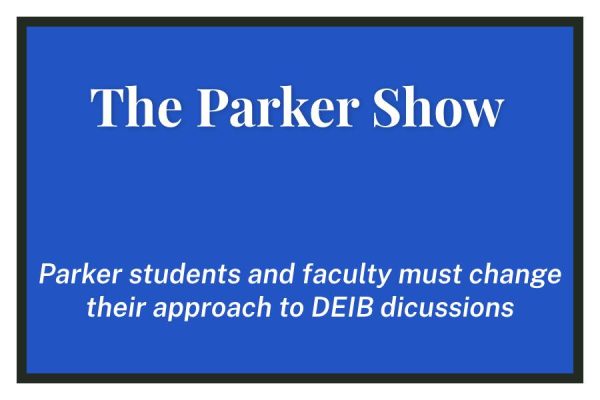Paddles all the Way Down – Editorial, Issue 6 – Volume CXI
We Can’t Parker Party Our Problems Away
For 33 years after Parker’s founding, Anita McCormick Blaine was the monetary backbone of the school. She supported 50% of the cost of student education at Parker with a family wealth built with contributions from Jo Anderson, an enslaved Black man who never got his portion of the money.
In 1934, Parker began to fundraise with parents, alumni, and what the school’s website describes as “friends.” Since then, Parker has grown a robust endowment that is now valued at around $70 million, according to reporting from “The Weekly.” Parker is no stranger to wealth. We inhabit a school of brochure-ready facilities named after the parents of our classmates and listen to visiting scientists whose fund shares a last name with our governor.
Parker’s culture of capital is mostly parallel to other peer private schools. Part of Parker’s mission, however, is inclusivity, seen with efforts to increase diversity in race, gender, sexual orientation, and socioeconomic background. A part of this effort is the redesign of the Parker Auction, now called the Parker Party. We’re swapping black ties for blue jeans and paddle raises for iPhone taps in service of promoting togetherness instead of elitist exclusion. These changes are welcome and perhaps overdue.
Fundraising at Parker is now more about bringing the community together in ways that make everyone feel comfortable. Emphasis is being placed on reaching out to new families unfamiliar with Parker fundraising norms, reminding constituents that a $10 donation is appreciated as much as a $10 million one, and opening up more opportunities for parents to donate time instead of money. The levels of the “Colonel Club” are now organized by donation continuity instead of donation amount.
But even these changes from the “top” – the Development office at Parker – cannot completely disrupt the cultural status quo. Many wealthy, “14-year” Parker parents form a social scene that feels exclusive, cliquey, and competitive to newcomers, as highlighted by parents on the @fwpanonymous Instagram. This bleeds into how parent fundraising operates, like the Polar Party Fun Run pages filled with family names and clap emojis. Not everyone feels comfortable posting on social media to “tap into their network,” and the wall of names on each grade’s page advances a culture where your donation can be seen as an add-on to your own clout. Generous gifts will obviously always matter to the school, but Parker can take steps at addressing the perceived power of donors at the school by making these gifts more discreet or even without naming rights, as suggested by @fwpanonymous in their letter.
One new-to-Parker parent remembered that a positive shift towards discretion – decreasing potential class anxiety by moving the sixth grade potluck from wealthy private homes to public school space – was openly looked down upon by a 14-year parent, after grilling the new parent about their background, as a lack of gratitude for the gesture of opening your home to everyone.
The Parker Party attempts to combat the typical exclusion by leaning into the party, re-centering activity by doing away with set tables. But the heart of programming is still a live auction – the bid method and scenery may have changed, but there is still a winner and a loser, still a bid for mostly luxury goods where wealthy families swap around vacation homes. The Parker Party can’t escape one of the core contradictions of philanthropy in private schools: some families use it as a way to pat themselves on the back and then call it a day for DEI.
The public spectacle, though modified, can still land the wrong way, as a performative virtue signal that uses “diversity” for marketing purposes. Social media language provided for the Polar Party Fun Run reads that financial assistance is important because it makes “my education more valuable.” This language is significantly improved, an acknowledgement in educational fundraising that expanding progressive education beyond a wealthy few is fundamental for its pedagogy. But it raises questions about who a Parker education is really for. If we as a private school are a company, then who are our target consumers? It’s fairly easy to fill in that blank.
Though diversity is a word meant to describe the demographics of a whole, it is often wrongly applied to individuals. When marketing says you can “add value” to your child’s education with “diversity” by donating to financial assistance, as with the Fun Run, it commodifies the existence of socio-economically marginalized students in this space, like they are not here for their own education but for the improved education of wealthier students, to teach them. In trying to affirm the indisputable importance of Parker’s financial assistance program, they end up exploiting it. “DEI” is now part of the product being sold to legacy and connected Chicago families. Come here and we’ll give you that progressive sheen to enhance your glamorous life, as if “equity” and “democracy” were other brand names.
This problem isn’t unique to Parker – many universities and high schools are undergoing somewhat of a reckoning with the inescapable inequities of private education. But here the problem feels exacerbated in those moments where the school reveals a wide gap between the theory of the mission statement and the actuality of daily life in the building. There are students, faculty, and administrators who are committed to boldly examining privilege and acknowledging how class and economic inequity operate in the building. The responsive, community-oriented changes in the development office detailed in this Editorial and “Life of the Parker Party” are major markers of progress. But they’re also revealing that putting away the paddle doesn’t put away a key reality. Bringing students from all socioeconomic backgrounds to Parker isn’t enough – the school has to bring them into a building that doesn’t just market values, but fully lives them everywhere.








